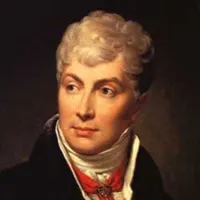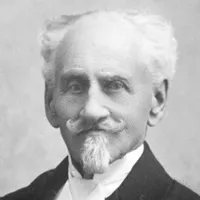Published:
Author: Antonio Maria Guerra
Sachertorte
HISTORY, INFO, PLACES, INTERESTING FACTS
Sachertorte: its taste is both austere and elegant. Characteristics it has in common with the city where it was born: Vienna. It’s hard to savor it without hearing the echo of a waltz, the passage of a coach or the clink of a Hussar sword. Let’s deepen the knowledge of this delicious Austrian specialty. Let’s find out its history, secrets and many interesting facts. Let’s visit the most traditional pastry shop preparing it using the original recipe.

The origins of Sachertorte.
 The first cookbooks explaining the preparation of a dessert similar to Sachertorte date back to the beginning of the Eighteenth Century. It seems that the official debut of this sweet delicacy took place in 1832, at a dinner hosted by Prince Metternich. The nobleman assigned his cook with the task of making a cake for the important personalities who were invited: it’s easy to imagine his disappointment when, a few hours before the beginning of the meal, he was informed that his servant had fallen ill and could not perform his duties. The Prince was therefore forced to entrust the delicate assignment to a simple apprentice, Franz Sacher, who at the time was only sixteen.
The first cookbooks explaining the preparation of a dessert similar to Sachertorte date back to the beginning of the Eighteenth Century. It seems that the official debut of this sweet delicacy took place in 1832, at a dinner hosted by Prince Metternich. The nobleman assigned his cook with the task of making a cake for the important personalities who were invited: it’s easy to imagine his disappointment when, a few hours before the beginning of the meal, he was informed that his servant had fallen ill and could not perform his duties. The Prince was therefore forced to entrust the delicate assignment to a simple apprentice, Franz Sacher, who at the time was only sixteen.
Legend wants that he said:
“Dass er mir aber keine Schand’ macht, heut’ Abend!”
(“Let there be no shame on me tonight!”)
The young Franz, well aware of the great opportunity he was given, rolled up his sleeves: inspired by the Austrian culinary tradition, he invented a dessert that was greatly enjoyed by the guests: the Sachertorte.
Vienna, the birthplace of Sachertorte.
Vienna, the fascinating bithplace of Sachertorte, is the capital of Austria. For many centuries it was also the nerve center of an empire led by the Habsburg family.

Where to eat original Sachertorte?
According to what explained in this article, the most traditional pastry shops to eat original Sachertorte are two:
Read more
- Café Sacher Wien
Philharmoniker Str. 4, 1010 Wien – Austria
Official Website; - Demel
Kohlmarkt 14, 1010 Wien – Austria
Official Website;

Franz Sacher, the father of Sachertorte.
 Deepening the knowledge of the life of Franz Sacher, it appears quite clear that the invention of his famous cake didn’t happen by chance since he belonged to a family with a strong tradition in catering and hospitality.
Deepening the knowledge of the life of Franz Sacher, it appears quite clear that the invention of his famous cake didn’t happen by chance since he belonged to a family with a strong tradition in catering and hospitality.
After his apprenticeship in the kitchens of Prince Metternich, Franz was employed as a cook in the city of Bratislava. Later on, he served on the ferry boat connecting the cities of Vienna and Budapest and in a famous casino in Pest. Back in Vienna, he opened a refined deli.
He had two sons, Carl and Eduard. The latter perpetuated his legacy by perfecting the recipe of Sachertorte when working at Demel, one of the most famous bakeries in the Austrian capital.

Romantic Waltzes for Sachertorte.
Some romantic waltzes to get in the mood of Vienna and accompany the reading of this article

Sachertorte at the first Viennese Culinary Exhibition.
In 1884 Eduard Sacher, together with a group of important hoteliers, was involved in the organization of the First Viennese Culinary Exhibition (*1). This event, at that time unique in its kind, was smaller but in a way similar to the World’s Fairs (*2). Its goal was to showcase the best the Austrian Culinary Tradition had to offer, promoting it around the world. From January the 5th to the 10th, the participants were invited to taste typical foods and to visit a great number of stands showing dishes, tablecloths and cooking equipment.
Read more
Many attractions were organized to entertain them: for example, it was possible to walk through a great tunnel dug in the ice, meant to preserve meat and fish. It’s almost needless to say that the Sachertorte, already considered one of the most famous Viennese specialties, had a place of honor. The initiative of Eduard and his colleagues was so successful to require the police to control the great number of visitors and ensure their safety. All the revenues were donated to charity.
Notes:
*1: The ‘Erste Wiener Kochkunstausstellung’.
*2: The World’s Fairs, also known as International Exhibitions, are important events held every five years in different parts of the world: each of the participating nations shows the best it has to offer in terms of culture, technology and creativity.

The secret of Sachertorte.
It is said that the recipe of the Original Sachertorte, invented by Franz Sacher and ‘perfected’ by his son Eduard, hides a secret: something that, if possible, makes this cake even more fascinating.
Read more
Many think that this secret consists in the particular balance of its ingredients. Many others focus their attention on the icing, prepared with three different types of dark chocolate: a characteristic that deeply affects both the consistency and the taste of this delicious dessert.

Hotel Sacher: charm and elegance during the Belle Epoque.
Eduard Sacher is remembered not just for having ‘perfected’ the cake of his father, but also for his commercial initiatives. He began by opening a refined restaurant in Vienna: this was so successful that a few years later he started a club near the Opera House, its guests were offered alcohol and different types of entertainment. During the time, the palace hosting the club was enlarged to provide catering and accommodation: it was the year 1876, the Hotel Sacher was born.
Probably not everyone knows that great part of its success was due to the hard work of Anna Fuchs, wife of Eduard.
Read more
When in 1892 her husband died, ‘Frau Sacher’ took over the reins of the hotel, showing emancipation uncommon at that time. Thanks to her remarkable skills, she managed it so well that it became a reference point for the international upper class during the ‘Belle Epoque’, the ‘golden age’ of the European continent (*1). The most important aristocrats, artists, intellectuals and businessmen were accommodated in its beautiful rooms, served by a huge number of very efficient waiters. The ‘Sacher’ was much more than just a place to eat and sleep: its famous guests loved to spend their time in its lounges, surrounded by class and elegance, enjoying some of the best moments of their lives.
Note:
* 1: The ‘Belle Epoque’ ended at the beginning of the First World War.

The ingredients of Sachertorte.
Here follows a list of the ingredients used to make the original Sachertorte:
- Dark chocolate;
- Apricot jam;
- Butter (some use margarine);
- Egg yolks and egg whites;
Read more
- Flour;
- Honey;
- Cream;
- Sugar;
- Salt;


Two cakes at war.
The history of the most famous cake in the world was marked by a legal dispute between the Hotel Sacher and the renowned Viennese bakery Demel. This dispute lasted many years and was centered on the right to commercialize the ‘Original’ Sachertorte.
To understand the complex issue, it’s important to remember that Eduard Sacher perfected the recipe invented by his father while working for Demel. After he left this job, he founded the famous hotel: when in 1934 it went bankrupt, his son Eduard (*1) was hired by Demel.
Read more
Meanwhile, the new owners of the hotel continued to sell the cake, creating a competitive situation with the bakery and causing the lawsuit. The contention between the two was so sharp that everything was debated: from the use of certain ingredients to the procedure of preparation. An agreement was finally reached in 1963: the Hotel Sacher was allowed to make the ‘Original Sachertorte’ and Demel had the right to use the title ‘Eduard-Sacher-Torte’.
Note:
*1: He had the same name of his father.

The ‘Original Sachertorte’ and the ‘Eduard-Sacher-Torte’.
Even if the ‘Original’ Sachertorte, made by the Hotel Sacher, and the ‘Eduard-Sacher-Torte’, made by Demel bakery, are quite similar to each other, they have some differences. Here follows a short list of them:
- The icing: The icing on the Original Sachertorte is made with three different types of dark chocolate. Its recipe is still a secret;
- The layers of jam: the Original Sachertorte has two layers, the Eduard-Sacher-Torte just one;
Read more
- The consistency: the ‘Original Sachertorte’ is usually softer and more grainy that the Eduard-Sacher-Torte;
- The plaques: the slices of the ‘Original Sachertorte’ are decorated with a small disc of chocolate bearing the text ‘Hotel Sacher Wien’. The cake made by Demel is decorated with a triangular chocolate plaque bearing the text ‘Eduard-Sacher-Torte’.

The right beverage.
What to drink with a delicious slice of Sachertorte?
Read more
A good choice could be a fortified wine, sweet, fresh, with a very long taste and smell persistence. For example a Marsala, a Port or a Madeira.
- The sweetness accompanies that of the cake;
- The acidity balances the fat in the dark chocolate.
- The taste and smell persistence match that of the Sacher;

Copyright information.
The images displayed in this page belong to WebFoodCulture, with the exception of:
Public domain images:
- Empress Elizabeth of Austria, Franz Xaver Winterhalter 1865 (Wikipedia Link) {PD-Art}
- Graf Klemens von Metternich, François Gérard, 1808 (Wikipedia Link) {PD-Art}
- Franz Sacher, 1907 (Wikipedia Link)
- Hotel Sacher in Vienna (Wikipedia Link)




